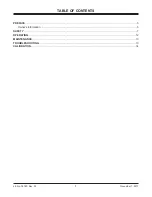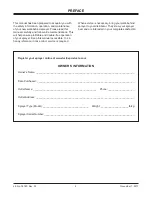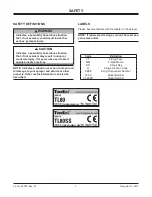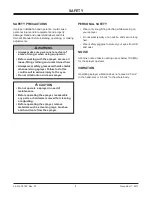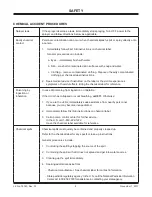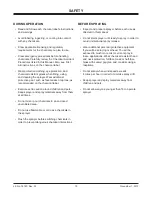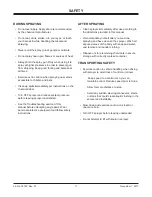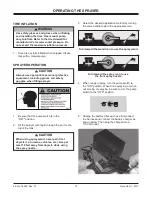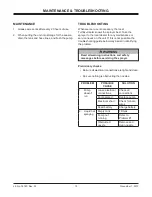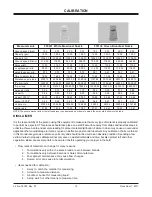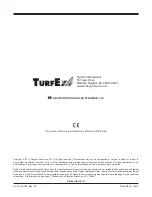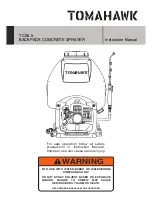
Lit. No. 76760, Rev. 00
10
November 1, 2017
SAFETY
DURING OPERATION
• Read and follow each chemical label's instructions
and warnings.
• Avoid inhaling, ingesting, or coming into contact
with any chemicals.
• Know applicable licensing and regulatory
requirements for the chemical you plan to use.
• Know emergency procedures before handling
chemicals. Carefully review the Chemical Accident
Procedures listed in this Manual. Also, see First
Aid instructions on the chemical label.
• Wear protective clothing, eye protection, and
chemical resistant gloves when
fi
lling, using,
and cleaning the sprayer. Wear additional
protective gear, such as face masks or aprons, as
recommended on the chemical label.
• Exercise extra caution around children and pets.
Keep sprayer and spray materials away from them
at all times.
• Do not mix or pour chemicals in an enclosed,
unventilated area.
• Do not use
fl
ammable or corrosive chemicals in
the sprayer.
• Flush the sprayer before switching chemicals in
order to prevent dangerous chemical interactions.
BEFORE SPRAYING
• Inspect and prepare sprayer before each use as
directed in this manual.
• Do not start sprayer until ready to spray in order to
avoid unintentional spray release.
• Wear additional personal protective equipment
if you will be spraying overhead. You will be
exposed to much more mist or errant spray in
these applications. Wear chemical resistant head
and neck protection, full face mask or half-face
mask with sealed goggles, and consider using a
respirator.
• Do not spray when wind speed exceeds
4 miles per hour in order to minimize spray drift.
• Keep sprayer and spray materials away from
children and pets.
• Do not allow anyone younger than 16 to operate
sprayer.



